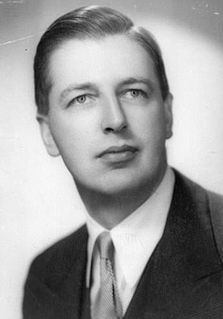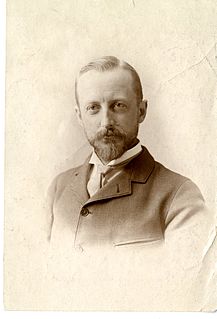
Frederick Law Olmsted was an American landscape architect, journalist, social critic, and public administrator. He was the father of American landscape architecture. Olmsted was famous for co-designing many well-known urban parks with his senior partner Calvert Vaux. One of Olmsted's early works included designing the Walnut Hill Park in New Britain, Connecticut. His later efforts included Central Park and Prospect Park in New York City and Cadwalader Park in Trenton. He headed the pre-eminent landscape architecture and planning consultancy of late nineteenth-century America, which was carried on and expanded by his sons, Frederick Jr and John C, under the name Olmsted Brothers.

Victor David Gruen, born Viktor David Grünbaum, was an Austrian-born architect best known as a pioneer in the design of shopping malls in the United States. He is also noted for his urban revitalization proposals, described in his writings and applied in master plans such as for Fort Worth, Texas (1955), Kalamazoo, Michigan (1958) and Fresno, California (1965). An advocate of prioritizing pedestrians over cars in urban cores, he was also the designer of the first outdoor pedestrian mall in the United States, the Kalamazoo Mall.
The year 1900 in architecture involved some significant events.
The year 1899 in architecture involved some significant events.
The year 1858 in architecture involved some significant events.

Calvert Vaux was an English-American architect and landscape designer, best known as the co-designer, along with his protégé and junior partner Frederick Law Olmsted, of what would become New York City's Central Park.

Thomas Dolliver Church, also known as Tommy, was a renowned and innovative 20th century landscape architect based in California. He is a nationally recognized as one of the pioneer landscape designers of Modernism in garden landscape design known as the 'California Style'. His design studio was in San Francisco from 1933 to 1977.

The Harvard Graduate School of Design (GSD) is a graduate school of design at Harvard University. Located in Cambridge, Massachusetts, the GSD offers master's and doctoral programs in architecture, landscape architecture, urban planning, urban design, real estate, design engineering, and design studies.

Willem Marinus Dudok was a Dutch modernist architect. He was born in Amsterdam. He became City Architect for the town of Hilversum in 1928 where he was best known for the brick Hilversum Town Hall, completed in 1931. Not only did he design the building, but also the interior including the carpets, furniture and even the mayor's meeting hammer. He also designed and built about 75 houses, public buildings and entire neighborhoods.

Arthur Coney Tunnard, later known as Christopher Tunnard, was a Canadian-born landscape architect, garden designer, city-planner, and author of Gardens in the Modern Landscape (1938).

Frederick Law Olmsted Jr. was an American landscape architect and city planner known for his wildlife conservation efforts. He had a lifetime commitment to national parks, and worked on projects in Acadia, the Everglades and Yosemite National Park. He gained national recognition by filling in for his father on the Park Improvement Commission for the District of Columbia beginning in 1901, and by contributing to the famous McMillan Commission Plan for redesigning Washington according to a revised version of the original L’Enfant plan. Olmsted Point in Yosemite and Olmsted Island at Great Falls of the Potomac River in Maryland are named after him.
The year 1893 in architecture, involved some significant architectural events and new buildings.

John Charles Olmsted (1852–1920), was an American landscape architect. The nephew and adopted son of Frederick Law Olmsted, he worked with his father and his younger brother, Frederick Law Olmsted, Jr., in their father's firm. After their father retired, the brothers took over leadership and founded Olmsted Brothers as a landscape design firm. The firm became well known for designing many urban parks, college campuses, and other public places. John Olmsted's body of work from over 40 years as a landscape architect has left its mark on the American urban landscape.

The discussion of the history of landscape architecture is a complex endeavor as it shares much of its history with that of landscape gardening and architecture, spanning the entirety of man's existence. However, it was not until relatively recent history that the term "landscape architecture" or even "landscape architect" came into common use.

Frederick Gage Todd was the first resident landscape architect in Canada. For the majority of his life he was one of a small group committed to the art and practice of structuring urban growth in the first half of the century. His projects ranged from Vancouver, B.C. to St John's, Newfoundland, from the smallest scale details of garden design to a study of the nation's capital.

Ignatz Anton Pilát (1820–1870) was an Austrian-born gardener who migrated to the United States to work on the design and planting of New York City's Central Park.

Jusélius Mausoleum is one of the most famous sights in Pori, Finland, located at the 1884 opened Käppärä Cemetery. It is the only mausoleum in Finland and was completed in 1903.
Milliron's Westchester, later The Broadway-Westchester, was a department store at 8739 S. Sepulveda Blvd., in Westchester, Los Angeles, designed by architect Victor Gruen. Its original design was considered a landmark in exterior architecture of retail stores, although much of the original design is no longer present. The building now houses a Kohl's.














